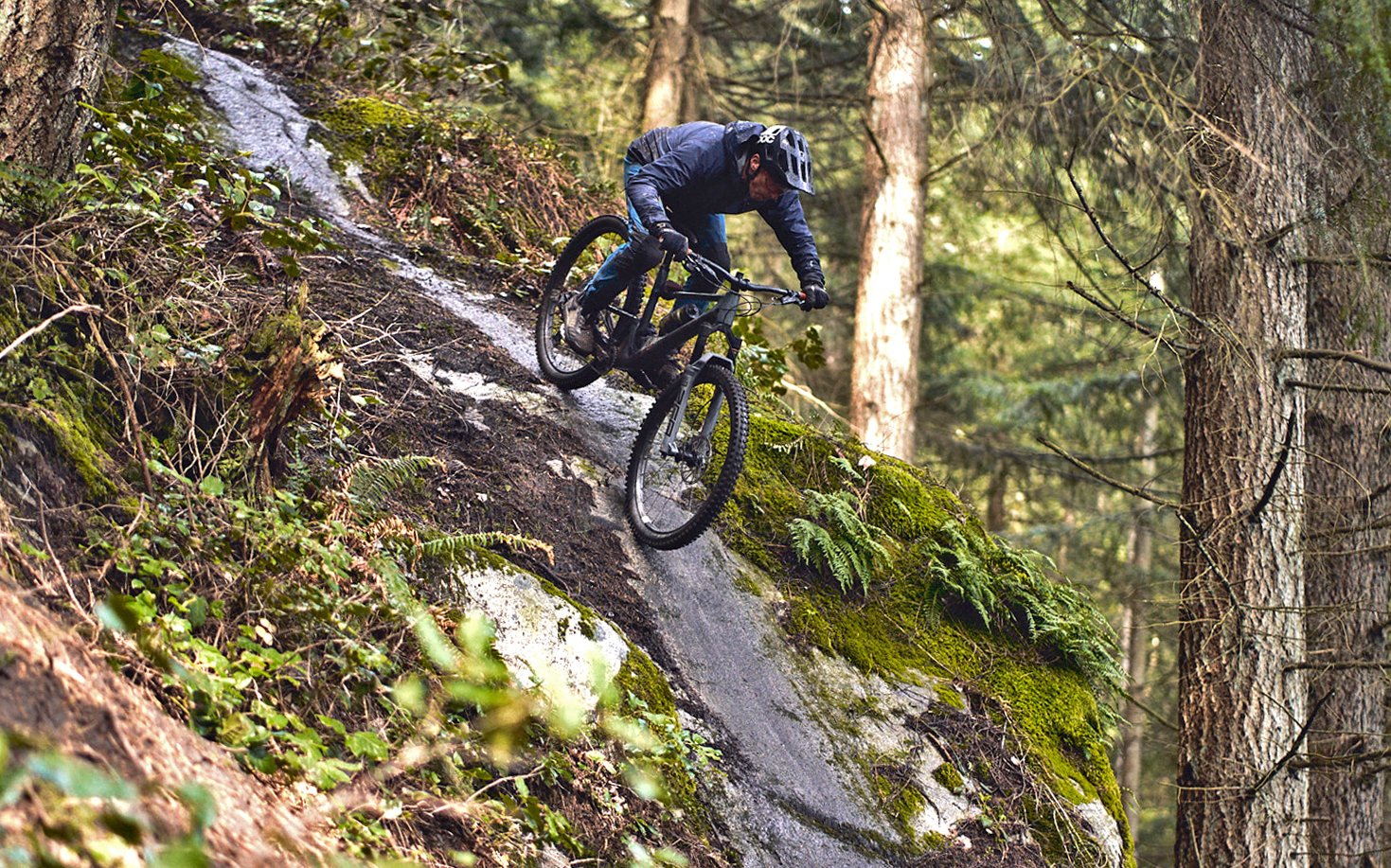
LONG TERM REVIEW
2022 SCOR 4060 LT NX Full Review
This would have been a disastrous review if I'd only had this bike for a month, as was initially proposed. In the end it was mostly my fault, or at least my fault for not figuring it out, but often it takes time for me to sort things. And with the SCOR 4060 LT there was a big issue that kept me from mining the bike's true potential. It puts me in familiar territory because it's embarrassing, but more on that shortly.
After struggling in a bunch of ways on this bike early on, even after making some component swaps and far more suspension tweaks, I couldn't get it to feel great in three distinct situations. The first and most noticeable was riding at high speed through rough terrain. Lots of velocity, on trail sections without many roots and rocks, worked out fine and steep and technical situations, with one exception, rode very well. In contrast to these experiences, it felt like the fork was spiking when the trail speed ramped up and got too lousy with medium to large-sized impacts. I sped up the rebound on both ends and that helped a little but not everywhere. Another issue was on very steep sections, often rock faces, where braking control and subtlety was needed. I allocated blame to the SRAM Code R brakes (VS Code RSC) in my head but I'd used these brakes previously without complaint. The other noticeable dead spot was getting the bike off the ground, and this was the detriment that, in retrospect, should have tipped me off about the source of my struggles.
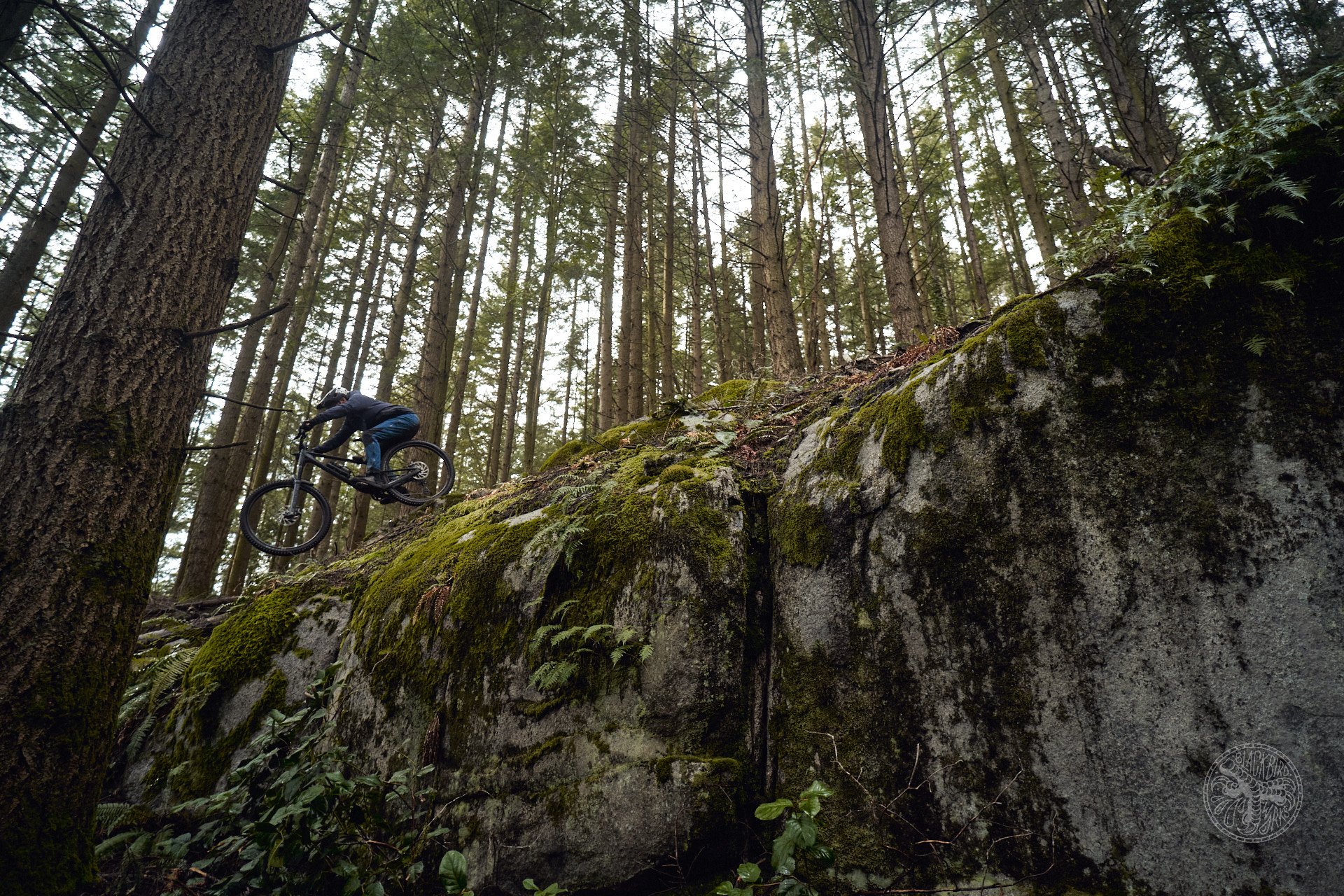
Eventually the bike started to feel much more eager to get airborne, once I got clearance that is...
SCOR Alterations
Through all of this I had been meaning to swap the seat post on the SCOR for something with more drop than the stock 170 mm X-Fusion Manic. I wasn't noticing massive issues with the post's length; there was simply an awareness of the widest portion of the saddle higher up between my legs more often than I was used to. It felt a little awkward but not so much that I was desperate to swap it out. I thought the issues laid elsewhere.
I had a 210 mm OneUp dropper (one of my faves) in 31.6 waiting until some other parts for a build and I figured it would be as easy as swapping out the post itself while leaving the cable, lever, and housing in place. What would you call that? A ten minute job? And yet I'd given myself a solid hour before I needed to leave for a ride, which is rare for me.
I removed the stock post and then took off the saddle. That was when things started to go sideways because it turns out the X-Fusion Manic seatpost requires the cable end, rather than the cable clamp, at the lever, unlike most posts I've used. While I'm no engineer, burying the adjustable end of your cable inside your frame doesn't seem to make good sense. Despite this hiccup, it should be a reasonably quick pivot, I thought to myself.
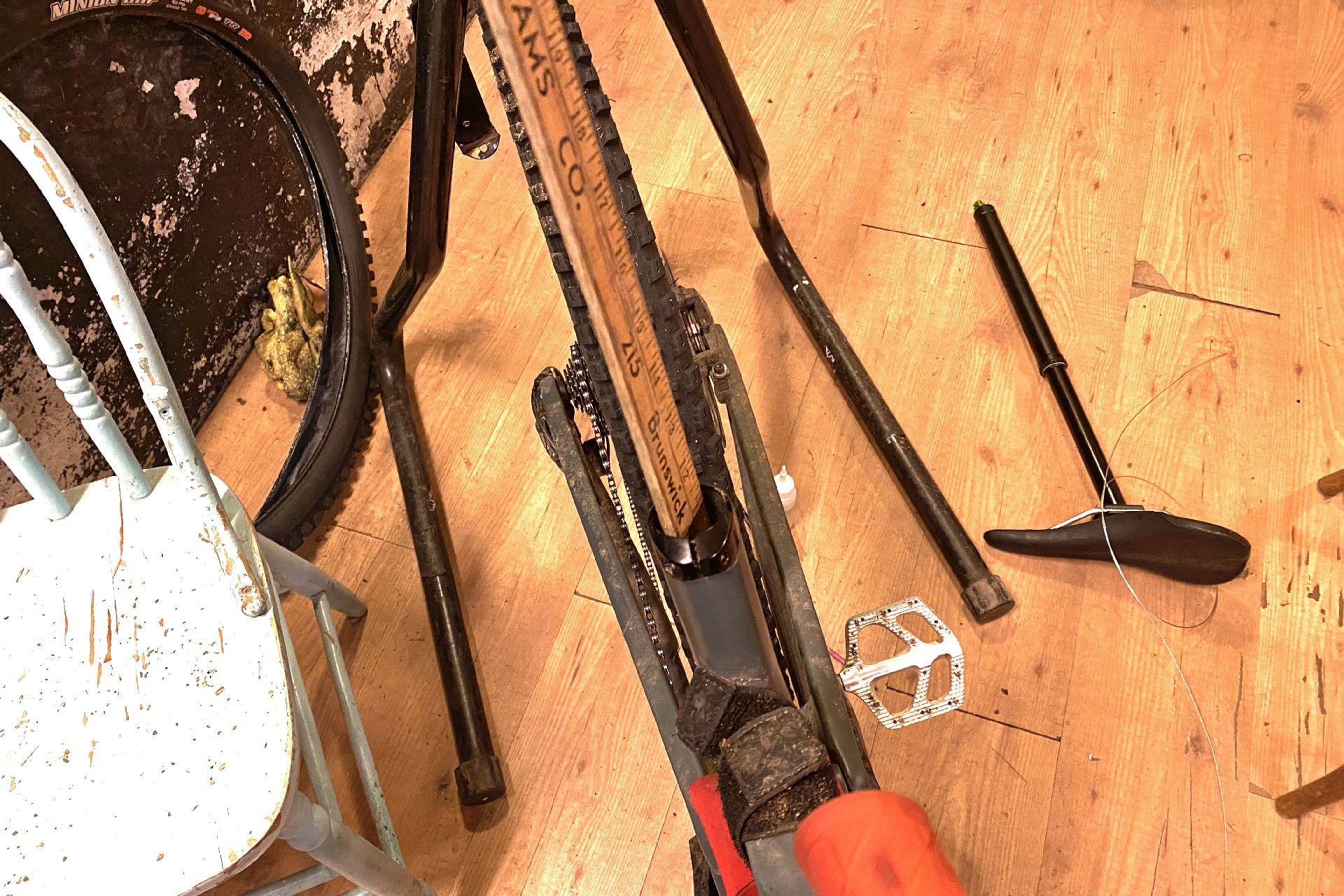
The 4060's cable routing is guided through the frame but the cable housing for the dropper emerges from the downtube into the open air to enter the seat tube and is somewhat awkwardly held to one side with a short section of guide, likely to keep it from rubbing on the rear shock. Once I had accidentally pulled it down too far into the top tube, getting it back up and into position was nasty and remained tricky even after I had removed the shock. Unfortunately my yardstick solution was unsuccessful. Photo - Cam McRae
I dug through a box and found a cartridge-bearinged Bike Yoke actuator - with an integrated cable clamp no less. The first task was reversing the cable. This is the point when things pivoted from sideways to a slow death spiral. Removing the cable was easy, despite the previously-clamped end of the cable being a little nasty. Once it was out, I used my sidecutters to clip the cable cleanly. I seated the cable end into the post and began to feed the cable into the housing, when it became stuck. I used an old trick and rotated the cable in the direction of the wind, so as not to fray it into a bouquet strands, but it wasn't cooperating. I pulled the cable out and it appeared my cut wasn't as clean as it should have been, which may mean it's time for new cutters. Cutting the cable again meant I was going to have to cut the housing as well.
And then it seemed things were starting to fall into place. The housing was a little long but the clock was ticking so it was time to wrap things up. I hooked everything up, careful to wind the barrel adjuster out to take up any cable slack, and then depressed the lever; nothing, and the lever felt spongy. There was no obvious explanation so I pulled the post, with the cable still attached, to inspect the mechanism. Everything seemed fine at both ends so I detached the cable to ensure it was running smoothly within the housing, which it was.
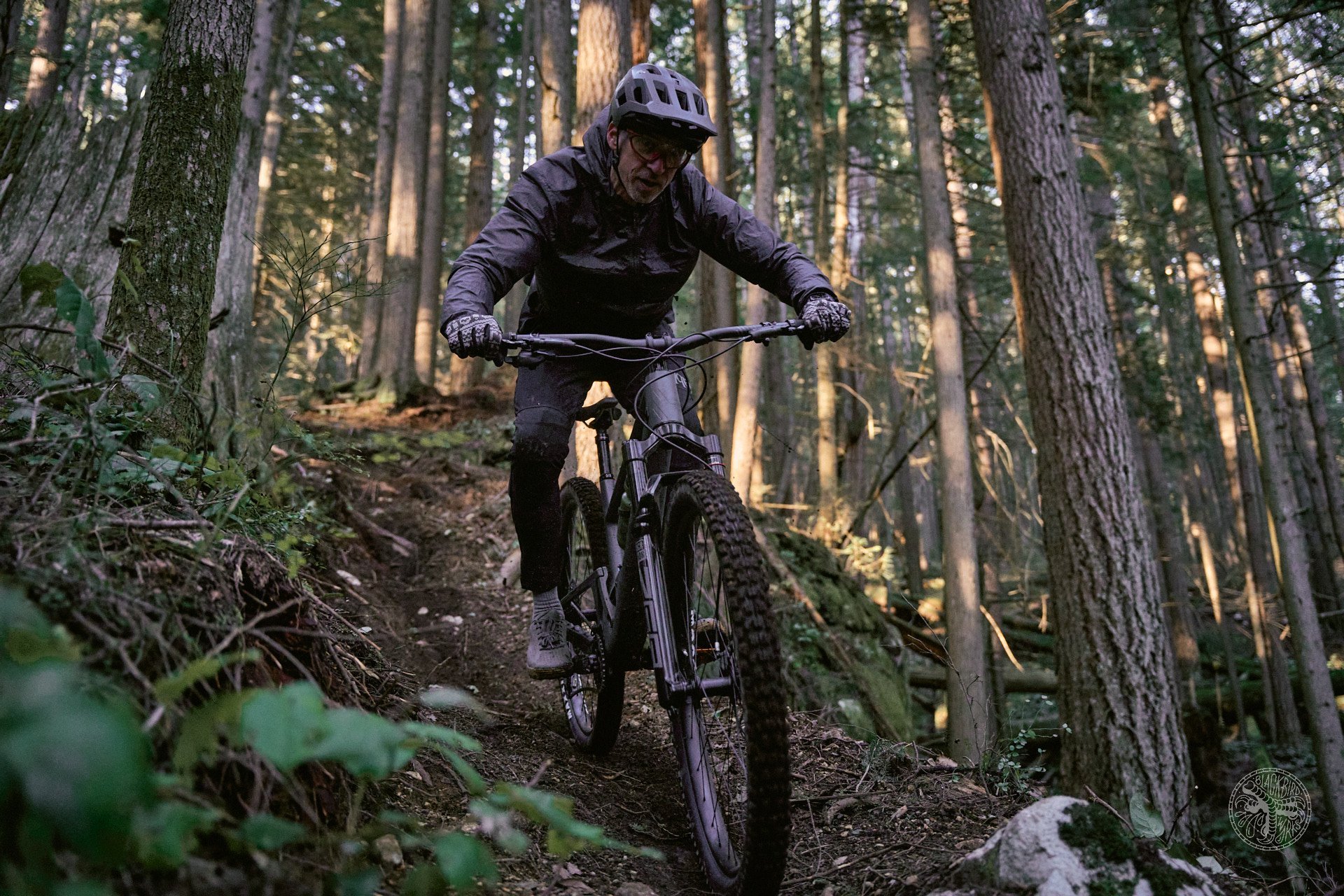
This photo gives a good view of how much post and saddle I had between my thighs, and I had lowered the post about an inch on this ride.
I decided to try the same thing again to see if I could get a better result (the definition of insanity) so I pulled the housing back out of the frame from the headtube to get the post back into position but failed to remember that I hadn't reattached the post, and I'd pulled it too far. SHITSHITSHIT. The housing had pulled far enough down into the seat tube that it was unreachable. Anyone who has dealt with internal cable routing knows this was a potential disaster because it's not always possible to push a cable through from one end, and at that point I didn't own a magnet system to ease this process.* Once I realized the seat tube was open at the bottom, I breathed a premature sigh of relief. I then attempted to push the cable from the head tube end. Instead of sliding smoothly toward the opening, the housing would get caught as the diameter of the supports below the seat tube narrowed to 31.6, and the excess cable would push out toward the rear of the bike. Solving this issue proved to be frustrating.
*This would have only solved my problem if I pulled the entire housing out and started from scratch but this was the last straw anyway and I picked up a cheap amazon set
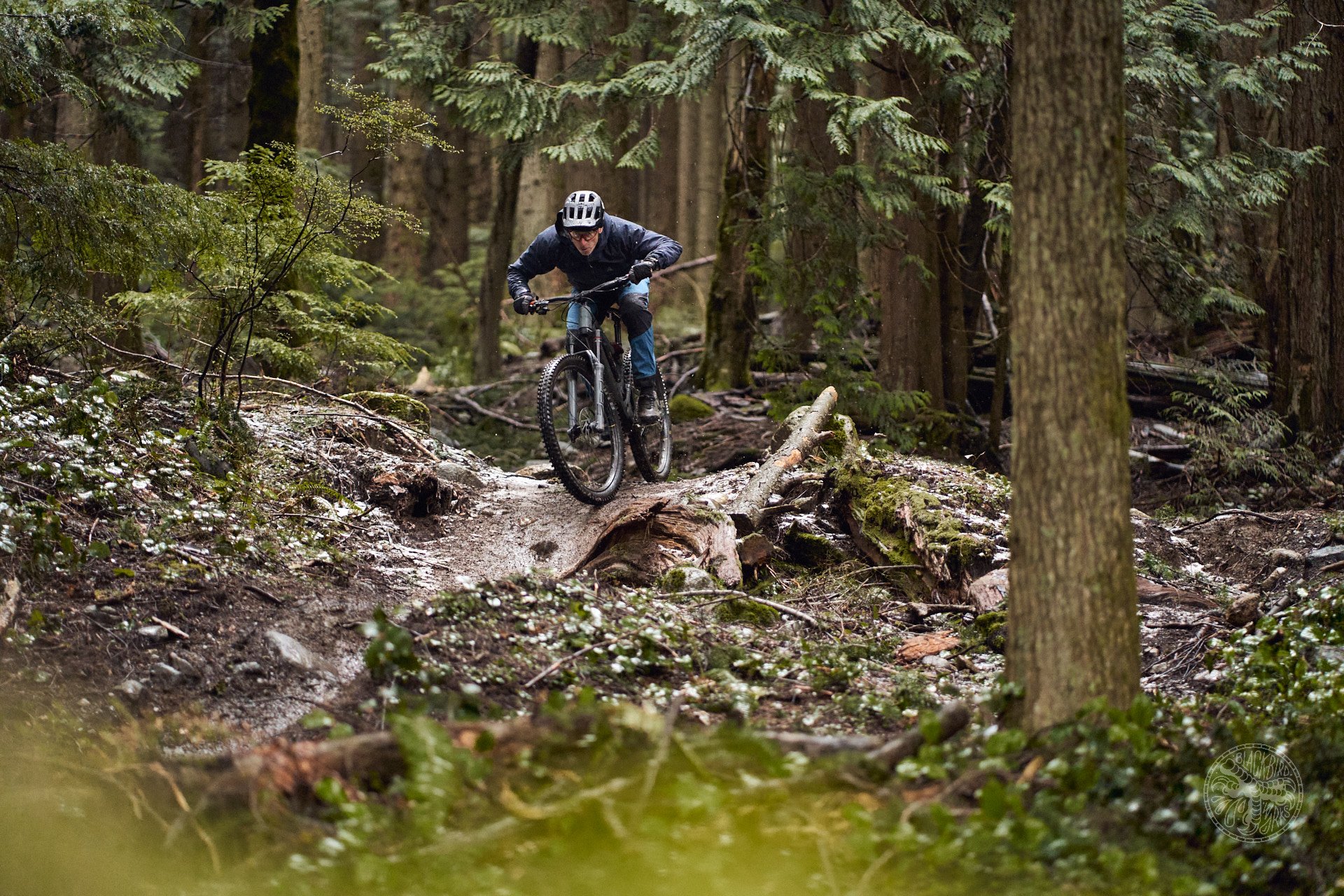
Notice the conspicuous saddle perched far too close to my nether regions. This proximity made preloading to get off the ground difficult for this punter.
I was stumped. I couldn't get my fingers in position to guide the tube into the middle of the seat tube opening because the shock lives below that space but I thought I might be able to slide something in, to act as a ramp. I pushed my late mother's yardstick into the tube from above but it took up too much of the void to be helpful. Initially I had considered removing the shock but I feared unforeseen consequences. As I looked around the shop, and then at my watch, it was clear I had no choice. Pulling the shock was easy but getting my fingers into the bowels of the bike while simultaneously pushing the cable from the head tube was not. I reached from the front and the back of the space below the seat tube to gain access and neither seemed effective. Eventually I got two fingers into position and, while simlutaneously pushing from the head tube, I used my digits as chopsticks and edged the housing over the hump. After 15 minutes of trial and error I was successful.
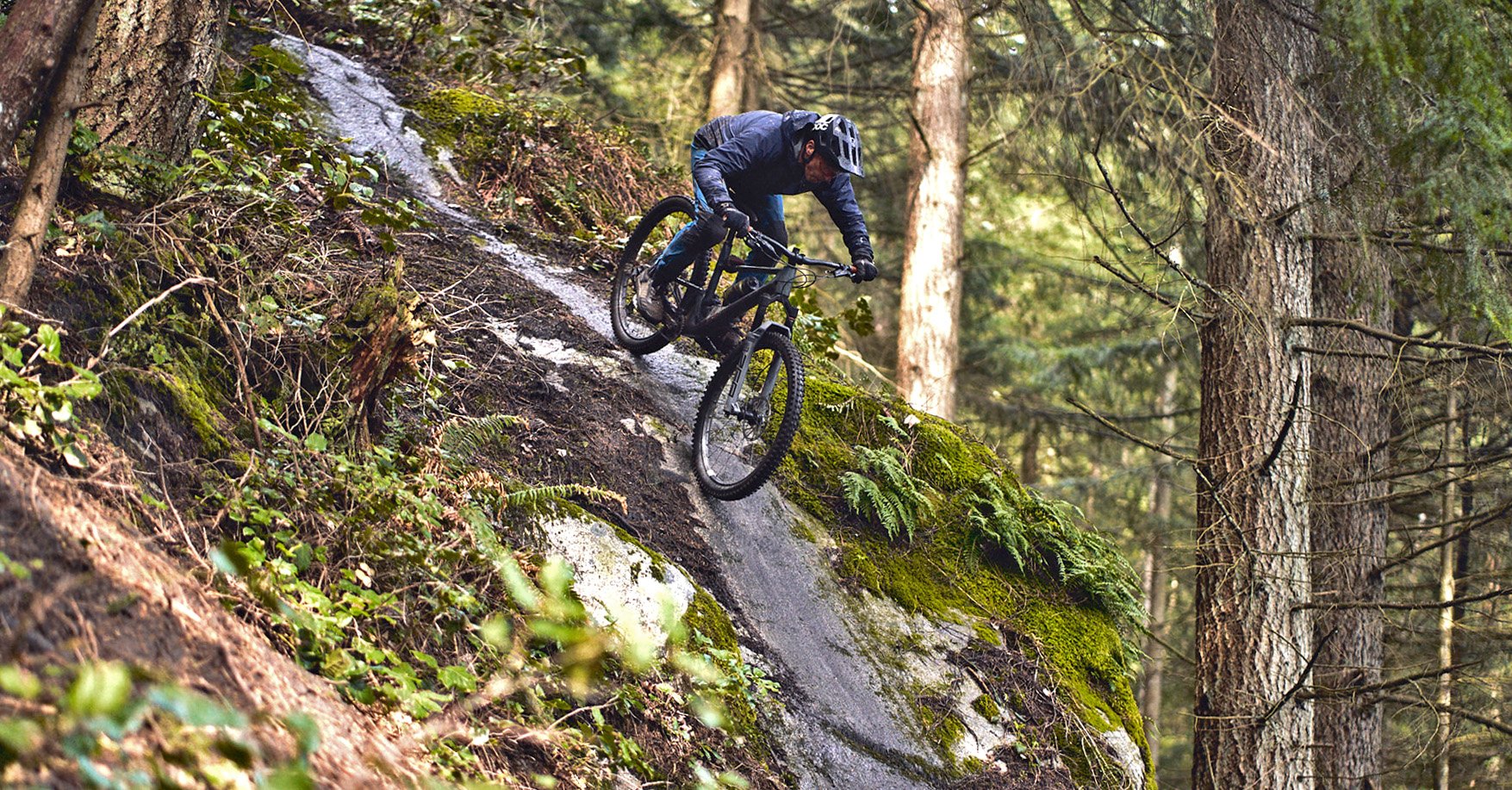
This is a move I do regularly without much trouble wet or dry. On the SCOR 4060 LT, before I swapped out the post for a shorter one, it was terrifying. The long post had me up so high that using the front brake was unwise, so I rode it faster than I ever have. It looks easy but there is don't-miss exposure on the right hander at the bottom that I railed far faster than I wanted to. The next time I found myself there it was easy peasy.
Dropper Salvation
My initial issue with the longer post was in fact length. With the OneUp post inserted to what I guessed would be full extension, the housing didn't have enough room from the opening of the guide to the post head to be run without aggressively sharp direction changes, which was my problem with the first install. And so I realized why the bike came with only a 170 mm post; there isn't much length for anything longer because of the short insertion depth. The top model 4060 LT in size XL has a slightly longer 185mm post, likely for the same reason; a consumer should expect that a bike with a 185 mm dropper can be run with the post bottomed out to take advantage of all that travel. Luckily, most of us who are long of leg need more extension, which is why I could make the 210 mm OneUp work adequately, despite the routing making the lever pull feel as firm as warm sushi.
This wouldn't be the case for everyone, but my body geometry performs best with a post dropping at least 200mm, and preferably 210-220. I suspected the post-length might have been slightly impairing my ability to provide a lucid declaration of the bike's merits, but little did I know it was ruining the experience. Once I got back on the trail with the longer dropper, the issues I was having with the bike completely disappeared. My braking woes, my ability to pop, and my high speed chunk struggles disappeared and the bike started to disappear beneath me. It went from being a perfectly serviceable bike to a real beauty and more of the platform's merits began to reveal themselves.

Eventually I was able to get loose (by my standard) on the SCOR in most every situation I encountered.
The SCOR 4060 LT NX on the Dirt
Considering the shorter-than-modern-enduro stays, it's not surprising the 4060 LT rewards an aggressively forward stance. Getting your elbows out and heels down is important on most similar platforms but it's even more vital here. Once you get some weight on your hands the bike really starts to sing, assuming the saddle is out of your way. The bike did very well in highly technical terrain that required a lot of body english; the sorts of trails that call on many of your skills.
SCOR's company mandate is about building bikes for fun, and for me, the most fun you can have on a bike is when you are popping off roots and rocks and finding unexpected downsides to land on, and this is another area where the SCOR scores. I wouldn't say it's as lively as my Yeti SB 150 with the EXT Storia rear shock and identical 433 mm stays, but it dusts quite a few others in that department.
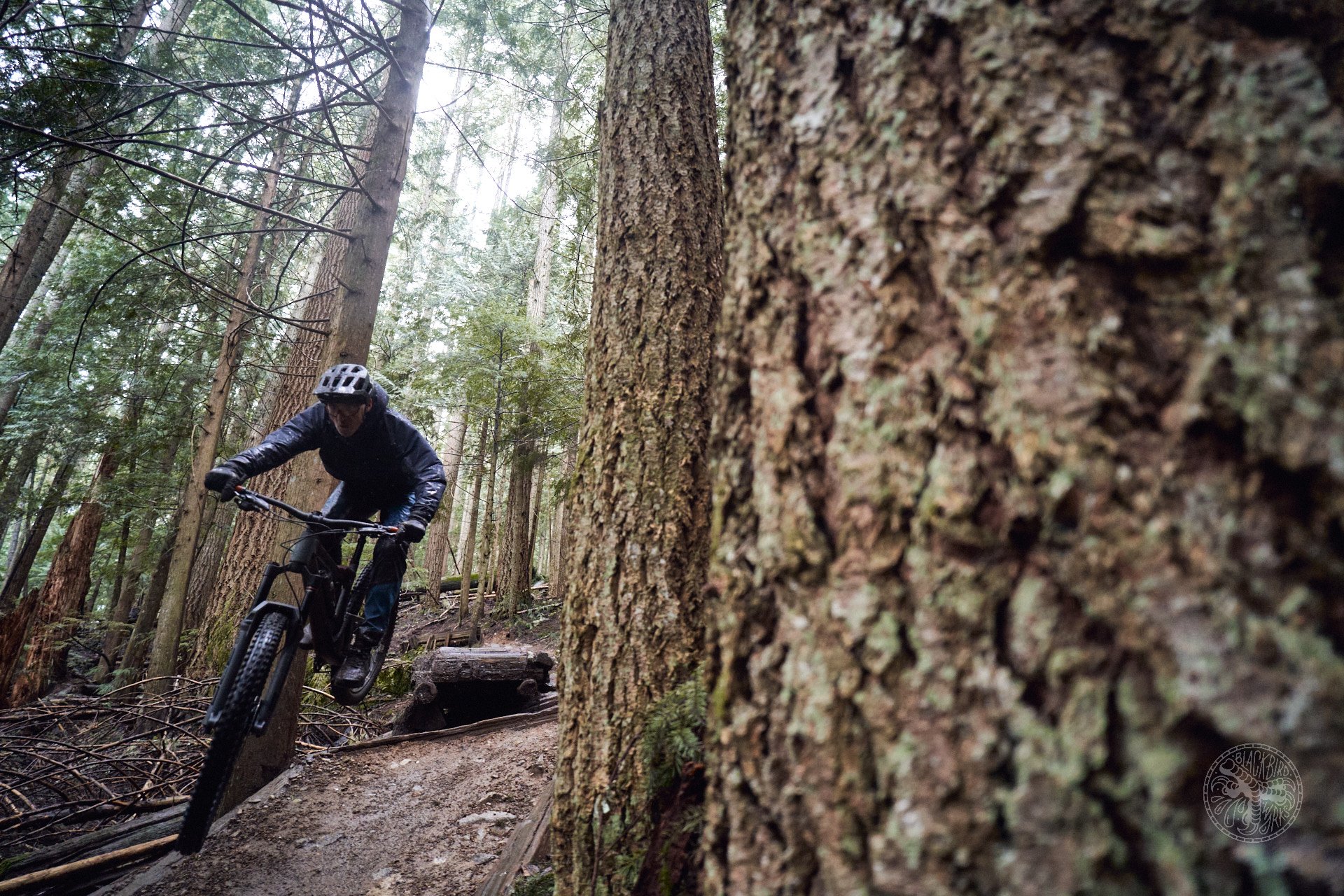
This is my version of a turndown. It looks even worse in person.
This is a particularly adept cornering bike that likes to be tipped steeply. It holds lines very well, even on uneven surfaces or those covered with kitty litter. Actually the SCOR feels a little like a mullet in the twisty bits, perhaps another benefit of the shorter stays. Similarly, swapping from one side to another hastily is one of the joys of riding the 4060. It's manoeuvrability is pretty remarkable for a bike with this much travel, which is another way it lines up quite well with the Yeti SB150.
About the only time when the bike felt a little less stable than some of the competition (Santa Cruz Megatower, Norco Range 29, WeAreOne Arrival 170) was at full gallop in challenging and rough terrain. The upside is that both the Range* and Megatower* need more speed to come alive, while the SCOR feels pretty lively at almost any speed. The Arrival isn't a fair comparison because it's an XL but it based on my limited data set it also prefers full sails.
*My comparison here is the previous generation of both of those bikes but it's certainly even more true of the current gen. Range
The bike's climbing strength revealed itself even before the post had been swapped out. The Lower-Link-Driven Instant Center Linkage proved very stable and capable of resisting pedalling forces efficiently. I rarely use any sort of climb switch so this is an important consideration for me. When things got a little rougher, the bike continued to pedal very well, both up and when stomping on the pedals out of the saddle on the way down.
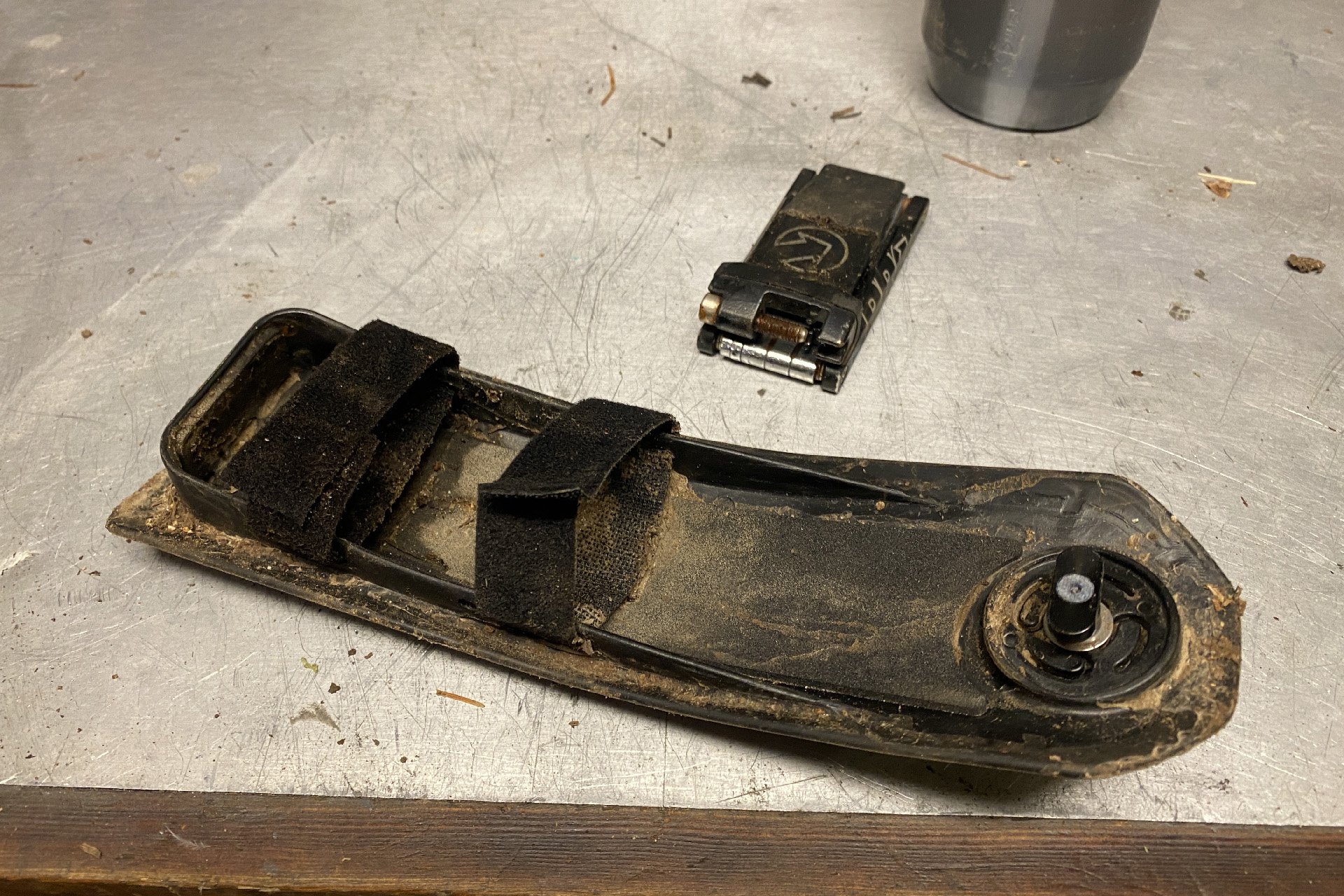
The SCOR's stash hatch isn't as useful as it might be. It's awkward to access because of the underside placement, only big enough for something small like a multi-tool, which can easily be carried elsewhere, and it isn't waterproof. It does however house a spare derailleur hanger. Photo - Cam McRae
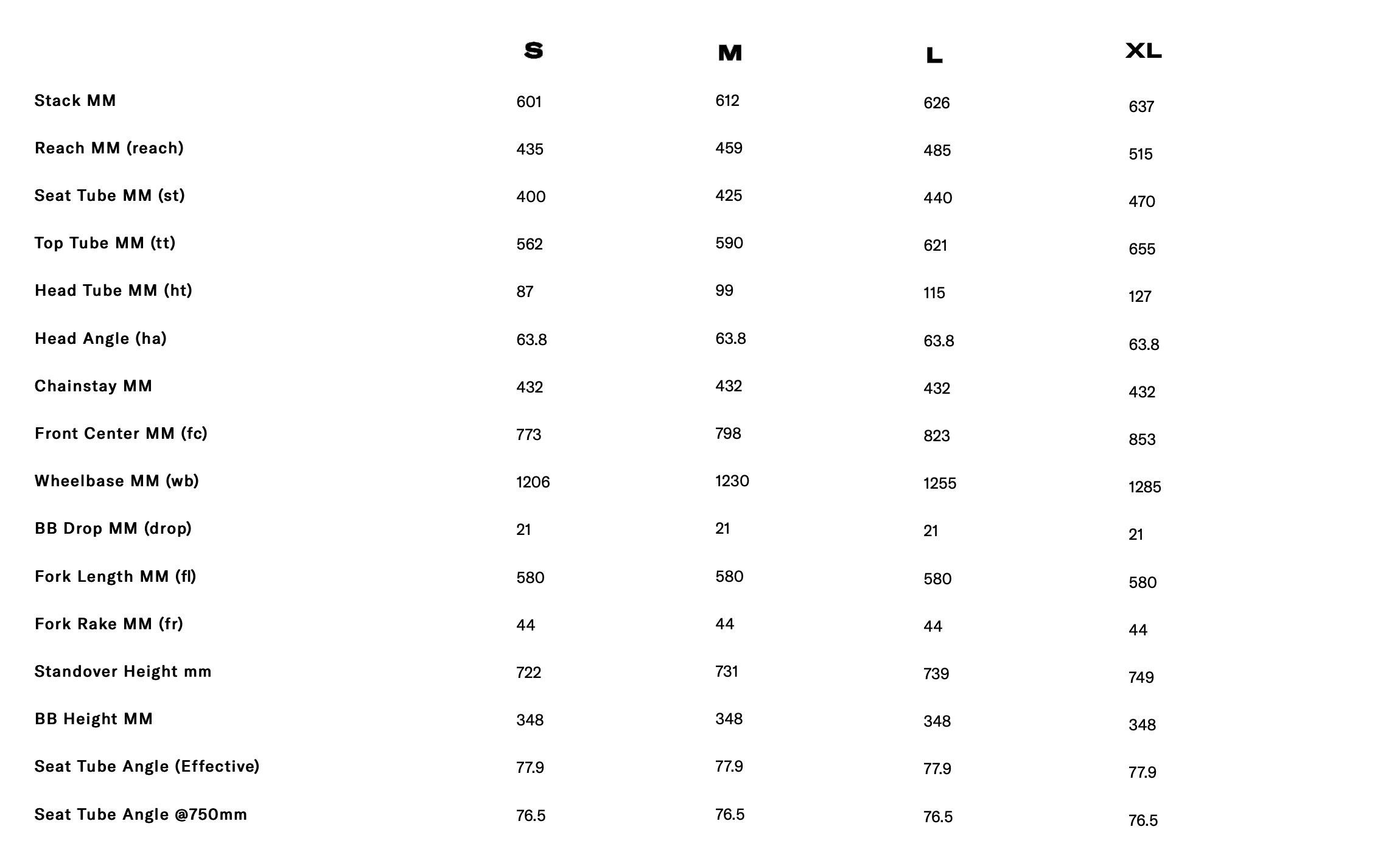
SCOR 4060 LT Geometry (provided by SCOR)
Component Spec Revisited
I was a little unsure about the Rockshox Zeb Select (rather than the Select +) in the beginning, thinking it was to blame for a portion of the conditional woes I explained above. In the end it proved to be a dependable and capable fork, despite paling compared to the 2023 Zeb Ultimate (with Buttercups) that I tested for part of my time on the bike. Support and ride height were decent but the vibration reduction of the Buttercup-equipped fork couldn't be matched in high speed chattery situations and more energy made it to my hands undissipated. I also found it less able to adapt to changing situations, like going from low speed jank to high speed chunder. The settings on the new Ultimate would handle both but the Select forced me to compromise with my settings. It was possible to feel a difference in most situations between the two forks; responsiveness, big hit bottom out resistance, support, and particularly small bump sensitivity. At the same time, for a bike with a retail price of 4500 USD/4300 €, the Zeb Select is a hell of a fork.
The RockShox Super Deluxe Select rear shock did its job extremely well and I easily found the sweet spot. The brakes were excellent once I sorted my body position; powerful, predictable, and with deep modulation. I managed to smack the SRAM NX rear derailleur to the point that it would mis-shift much more often than usual (compared to even a GX Eagle) but it was easily knocked back into alignment. Based on long term reports of NX durability, this may be one of the low points of the spec, but not as low as the X-Fusion Manic Dropper. It worked okay but the lever feel wasn't great (likely more related to cable routing than the post) and the drop of 170 mm was inadequate for a a bike with 485 mm reach, and way too short for me in the end. The part I disliked most was the cable clamp inside the seat tube, attached to a long and primitive looking mechanism.
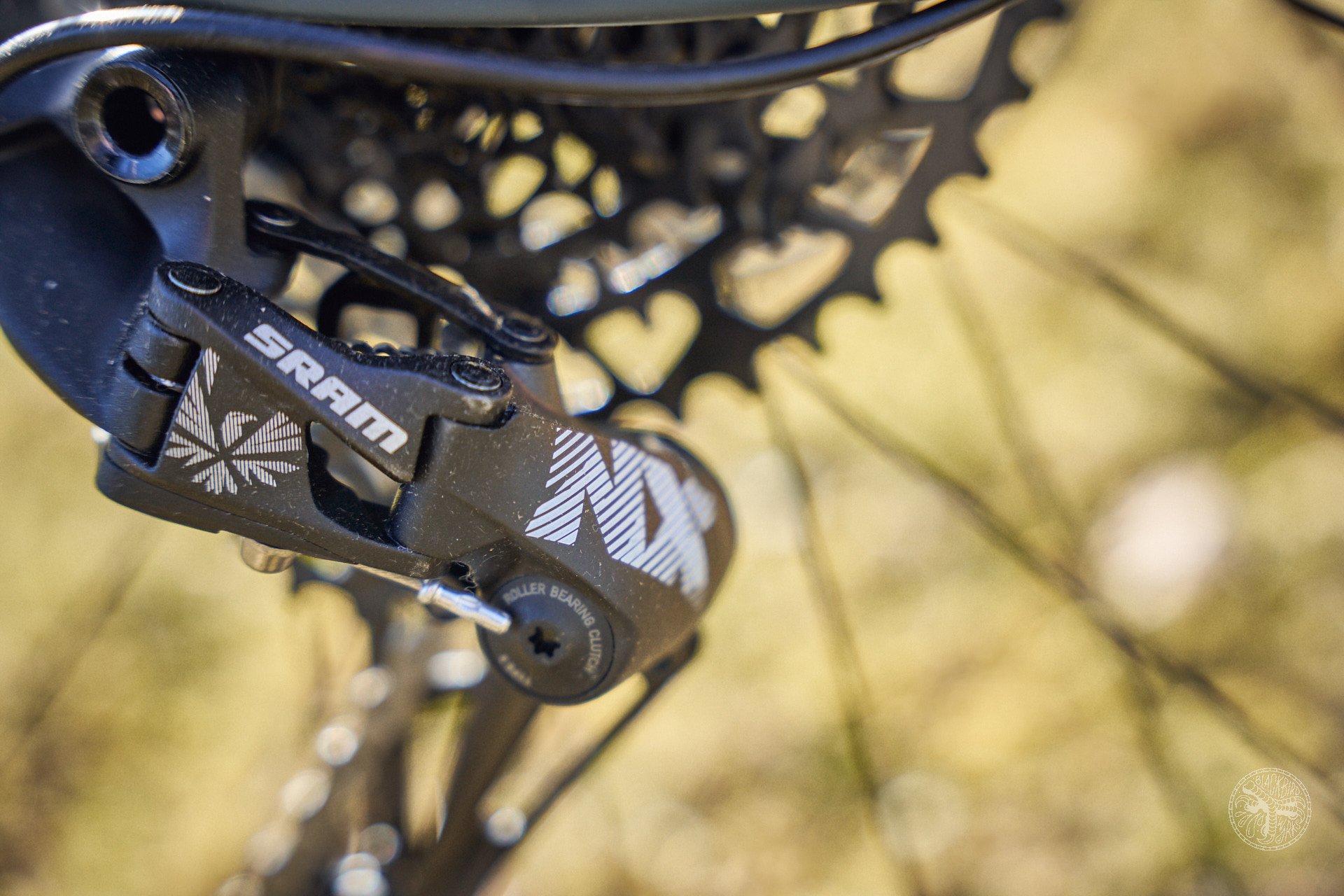
None of the bike shop types* I know speak highly of the SRAM NX rear derailleur, and it lacked the precision, strength and rigidity of pricier Eagle rear mechs.
*who know everything - seriously there is no better way to find out what is breaking most often than talking to a bike mechanic
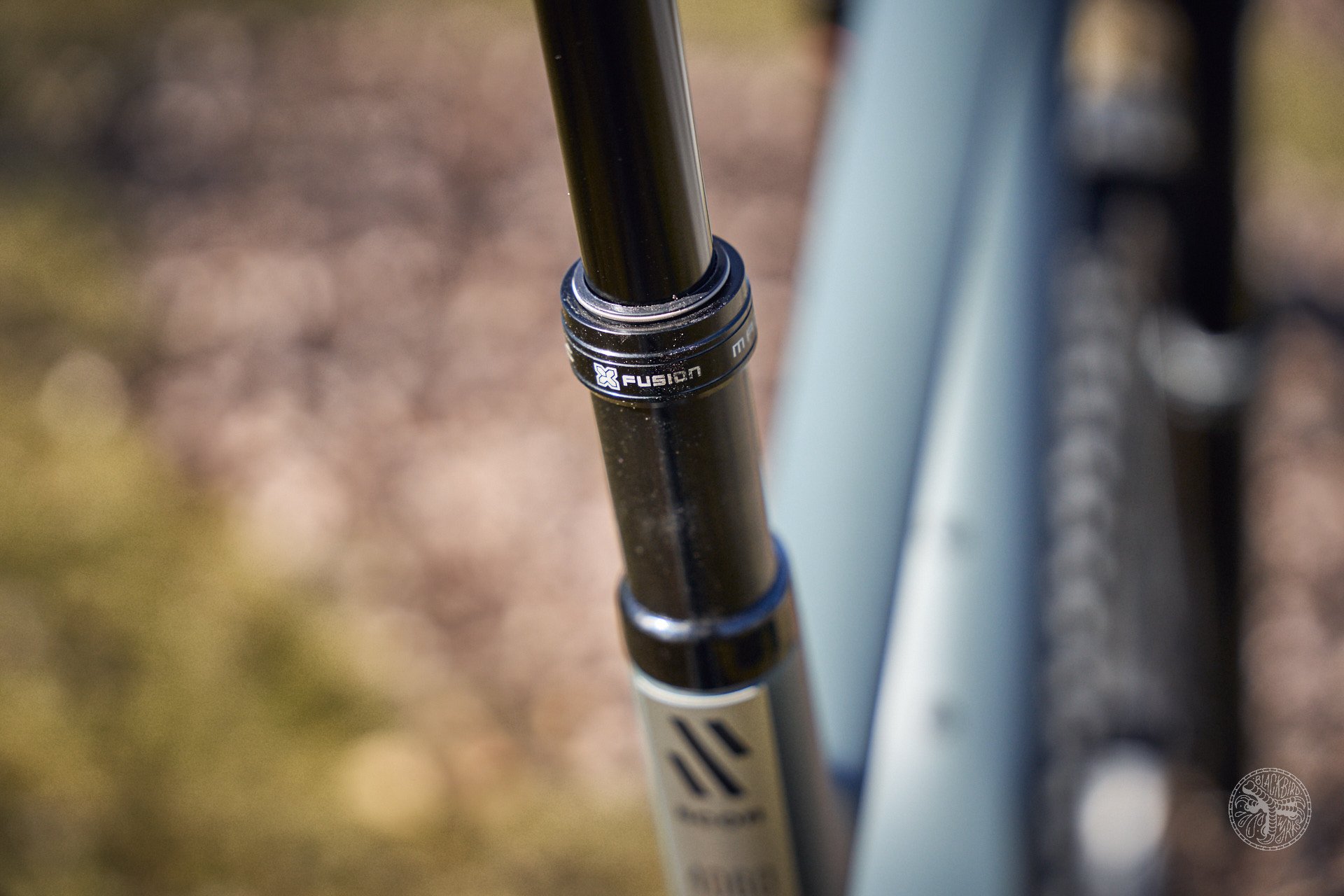
The post, because of the clunky engagement mechanism and the cable clamp on the bottom of the post, was a low point.
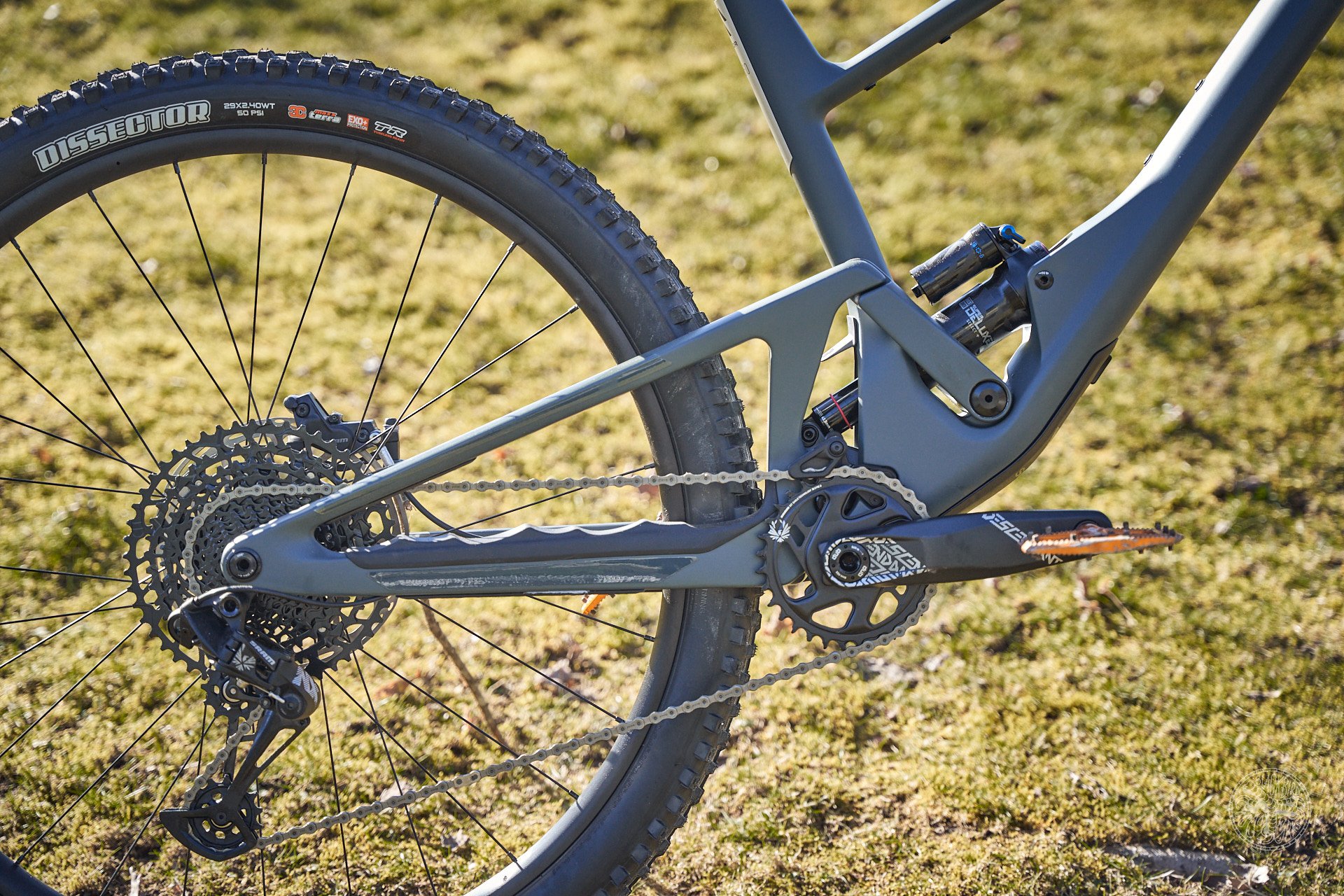
The drivetrain performed just fine but everything I've heard suggests NX components aren't built for the long haul.
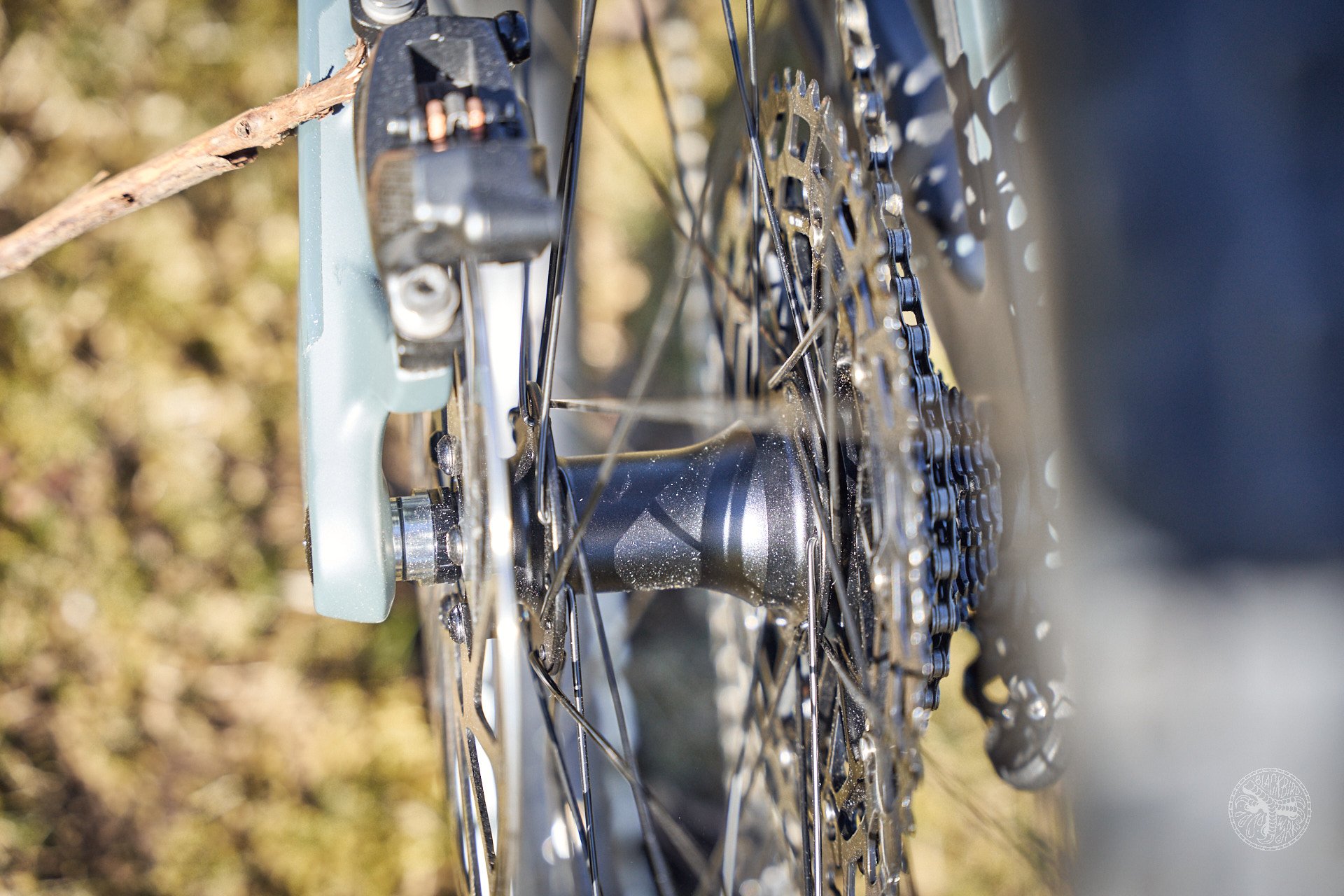
The NX cassette, which mates to Shimano's HG cassette interface, may be the build's achilles heel since it means you won't be able to upgrade to an XD cassette without finding the appropriate driver for the XDX wheels

The always-present derailleur hanger is a nice touch.
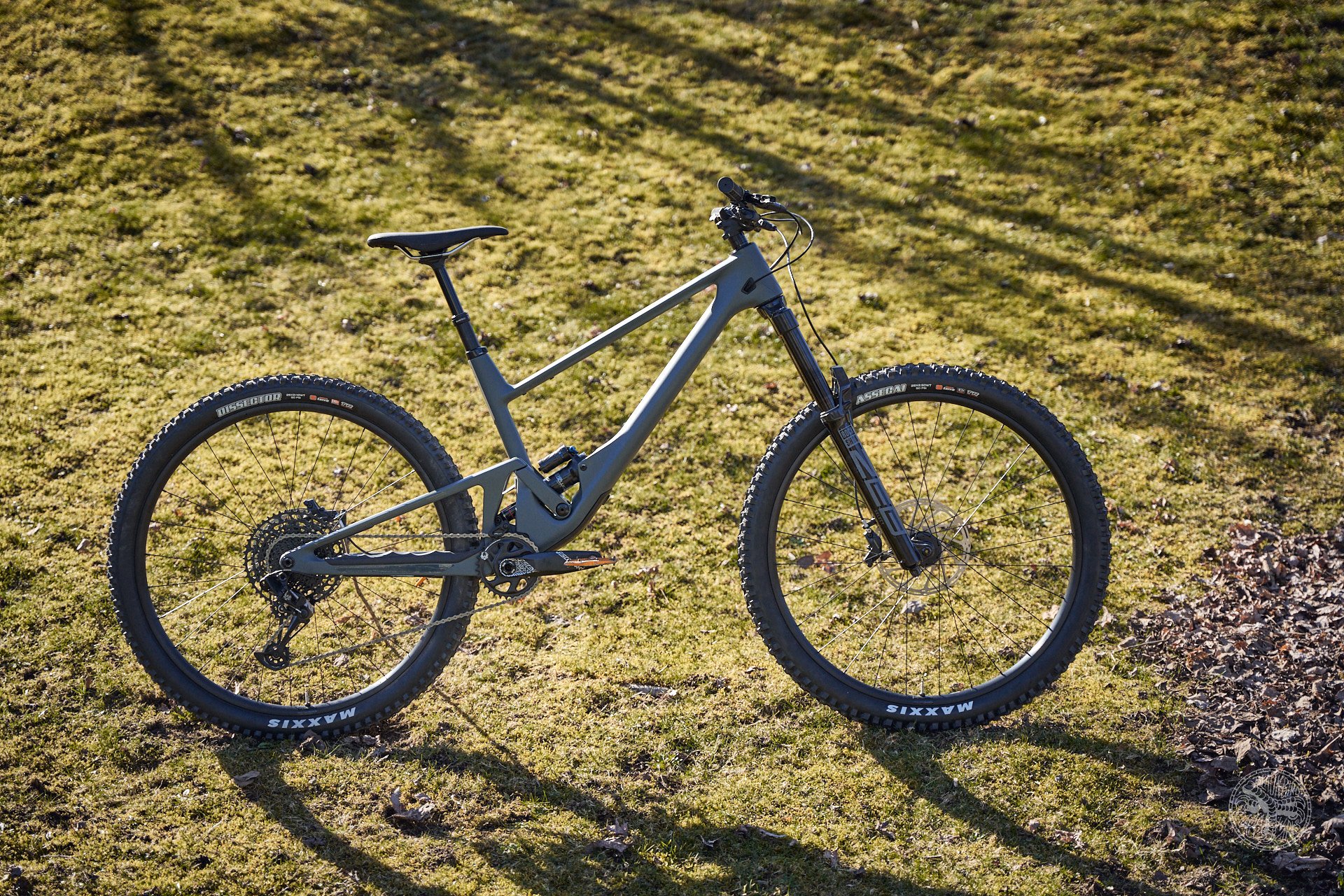
I have nothing negative to say about the fork, rear shock, tires, cranks, bars and stem, brakes or saddle (although it's pretty heavy) which is remarkable for a quality full carbon-framed bike that retails for "just" 4500 USD.
The virtually no-name wheels (XDX) did very well and weren't too heavy while the Maxxis Assegai EXO +/Dissector DD MaxxTerra tire spec. would have been spot on, if it had arrived as advertised. The front Assegai MaxxTerra I received was actually supposed to have been a MaxxGripp. A downside to the NX drivetrain spec. is that it may be a challenge to upgrade your cassette. NX cassettes run on Shimano's HG freehub system so you won't be able to upgrade to XD or Microspline unless you can find a driver for that XDX rear wheel, which sounds like a supply chain nightmare. An option would be one of Rotor's beautiful cassettes, which fit on the HG free hub and play more nicely with the current generation of Eagle derailleurs. When I tested the Rotor cassette initially, SRAM changers were only capable of a 50t max largest ring.
It was refreshing to discover the SCOR aluminum handlebar was a 31.8 and it hit the flex sweet-spot nicely. The unbranded stem was fine, and a great place to save money. All in all, the creatively puzzled together parts on this bike make it incredible value, particularly when compared to the frame only price of 3800 USD. That $700 gets you some very well-thought out components that you could easily build upon.
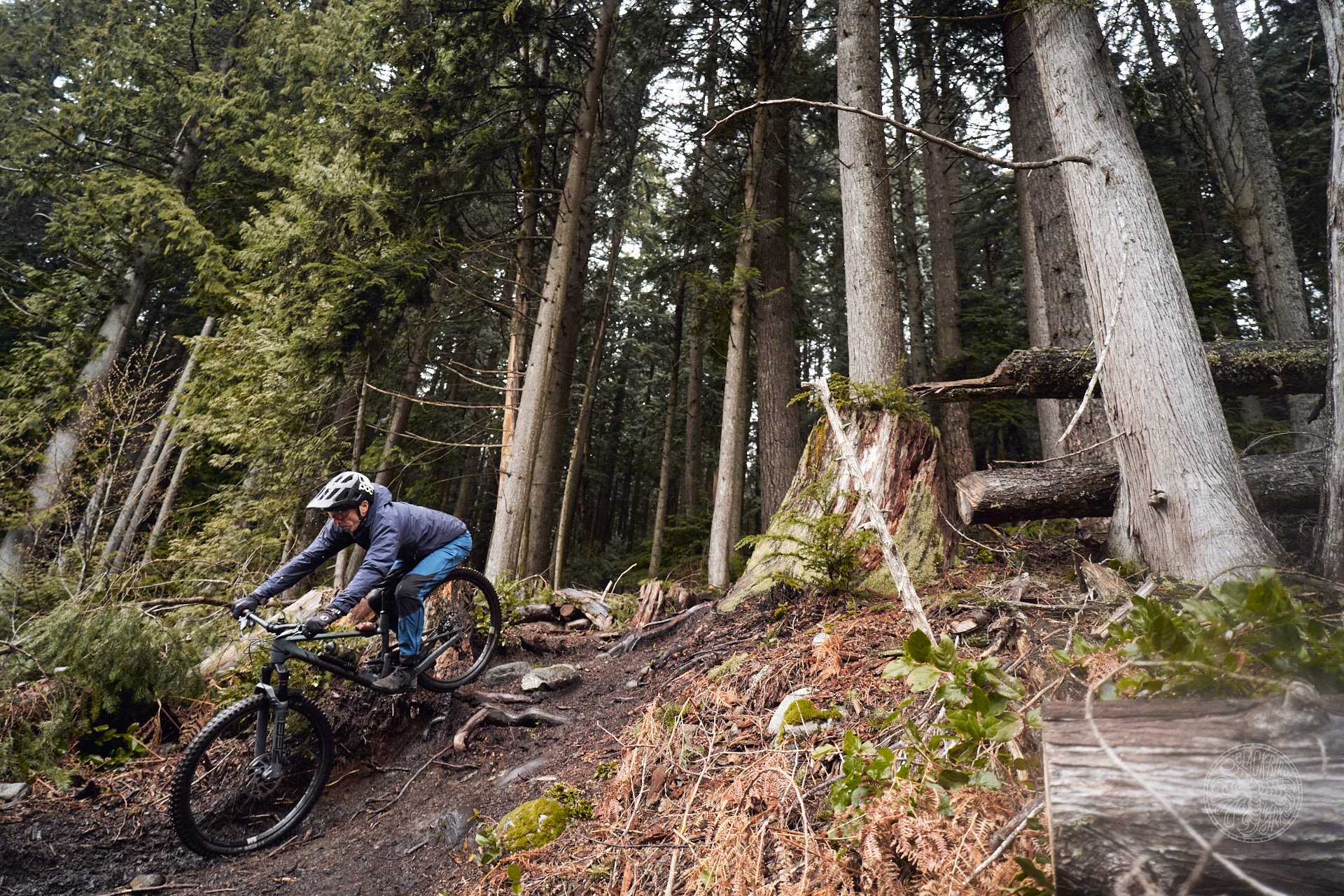
In these sorts of slow speed janky situations the bike was fine from the get go, but even here it got better once I got the post situation sorted.
40 mm to Paradise
Every time seatposts have increased their drop I've declared no use for those extra millimetres. And then I try them and discover what I was missing. Lower saddles have become more important as bikes have gotten longer. It used to be relatively easy to hover behind the saddle while descending but now I find myself hovering above my perch in most situations. Aside from the SCOR, the other bikes I've been riding lately have 210, 220, and 225, mm of drop respectively. It seems I'm an addict. This coincides with a recent boost in my downhill confidence and ability.
At first I was likely riding worse on the SCOR with the 170 dropper than when I was used to riding with a 170 mm dropper, hampering my ability to enjoy the bike. For most people, without disproportionately long legs, this won't be a problem at all, but some riders opting for the XL frame size might encounter similar issues. Anyone with longer legs than I have should be fine but I had the 210 mm post as low as I could push it and I couldn't raise it to the point where the cable allowed the post to function normally. This data leads me to believe that most riders should be able to find their sweet spot, in terms of pedalling extension and adequate drop, as I did, but many will need to swap the stock post.
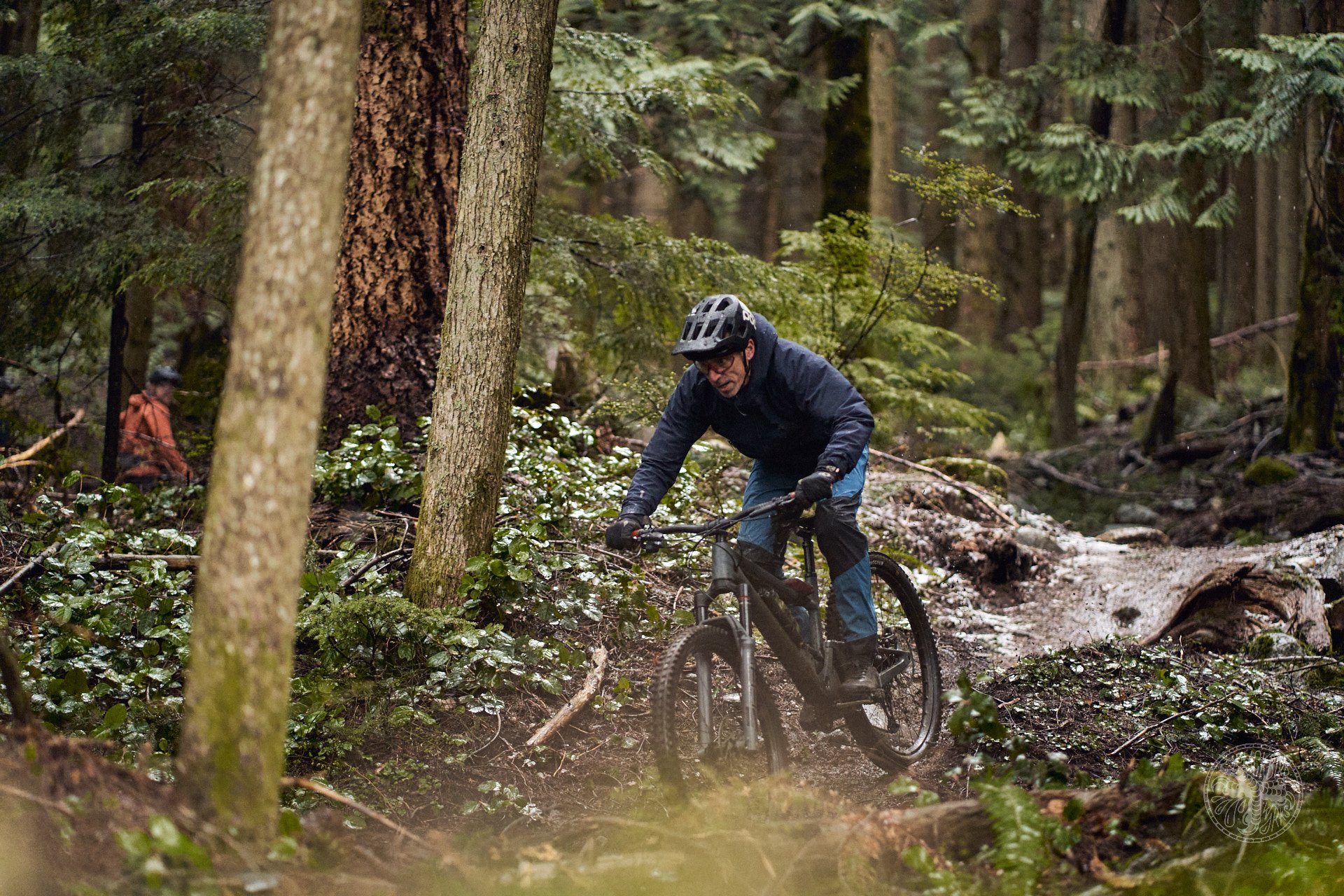
Planted.
TBD
A few unknowns remain. I can't comment on how well the pivot bearings have fared and, despite a nice amount of fender coverage, the loam shelf where the the linkage lives seems a little susceptible to the weather. I don't have any reason to doubt either of these factors but I'd prefer to be able to communicate more about this considering SCOR is new in these parts and I have never seen a BMC on our trails.
SCOR 4060 LT NX Highlights
- Weight (size XL) without pedals 32.15 lbs (14.6 kg)*
- 170 mm travel front, 160 mm travel rear
- RockShox Super Deluxe Ultimate + rear shock, RockShox Zeb Ultimate fork
- Full carbon frame w/guided internal routing and frame protection
- Stash Box below bottom bracket
- 4500 USD/4300 €
- Adjustable head angle (via pressed in proprietary angleset)
- Mullet and coil shock capable
- 432 mm Chainstays (all sizes)
- 63.8º stock head angle (can be adjusted to 65.3)
- 76.0º seat angle at 750 mm
- Convertible to ST model with shorter shock and flip chip
*This is actually lighter than the 33.5 lbs/15.2 kg listed on the SCOR website - and I weighed it twice
Verdict
After pulling me head out of my ass, and the 170 mm post out of the frame, I got the SCOR 4060 LT exactly where I wanted it – and in the end the bike exceeded my expectations in terms of both performance and value. The SCOR frame is the highlight of the package and it is thoughtfully finished and very well made, right down to the durable paint. I also love the details like the concealed pivots and well placed frame protection. None of this should come as any surprise considering parent company BMC's reputation for quality construction and precision engineering.
The slightly short stays might miss the sweet spot slightly for some riders, but for our tight and steep local trails I rarely noticed a downside, while the cornering, manoeuvrability, and liveliness of the bike are likely enhanced. The suspension kinematics provide a nice pedalling platform but without going overboard on anti-squat and compromising DH qualities. This is a bike that likes to get busy on challenging trails but I wouldn't call it an all out rocket. If high pivot bikes like the Norco Range are your jam, and going in a straight line like a bat out of hell is all there is, this may not be for you. I'll gladly take that trade. Like SCOR, I'm all about having a good time on the trails rather than pursuing KOMs.
The value of this version, considering the mere $700 premium on a frame-only (albeit with a Fox X2 Factory rear shock), is pretty remarkable when you consider the excellent suspension and brakes and serviceable wheels. The SCOR LT GX for 6600 USD might make even more sense than upgrades for many riders and again presents the sort of value the land of Rolex and Patek Phillippe is known for(!)
In the end this is a bike I could live with quite happily and with some targeted component upgrades, (or the GX model) it could be an absolute slayer.
Frameset Prices
4060 FRS LT - Fox Float X2 Factory : 3799 USD
4060 FRS ST - RS SDLX Ultimate : 3599 USD
4060 FRS LT Limited – Öhlins TTX22M/RXF 36m.2 Coil : 4999 USD (fork included)
Height - 6'/183cm (mostly legs)
Weight - 170lbs/77kg
Inseam - 33"/84cm
Ape Index - 0.986
Age - 58
Trail I've been stoked on lately - Sam's Dad's Trail
Bar Width - 760mm
Preferred Reach - 485-500mm (longer with 27.5 wheels than 29)


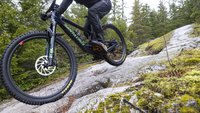
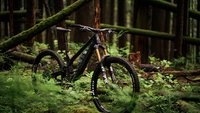
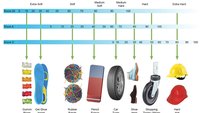

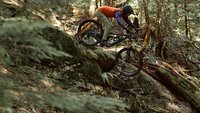
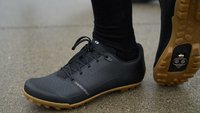
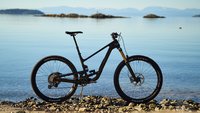

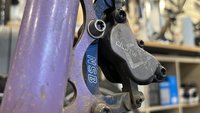
Comments
Jenkins5
1 year, 10 months ago
Nice review. Have been curious about a Scor for a while.....That's by far the most I've ever read about a 170mm dropper being an issue and ruining a bike though! Lol.
Reply
Cam McRae
1 year, 10 months ago
As editor, I could sometimes use an editor! I felt it was important given that my premiminary review was quite lukewarm as a result of this issue. Valid point all the same. Cheers!
Reply
Gage Wright
1 year, 10 months ago
In the day and age of extravagant pricing everything needs to be one point and every faux pas* called into question.
Bike companies who cannot engineer a frame with a long seat post to fully hide a dropper and give the rider space. Faux pas.
Messy cable routing, poor internally guided cable (on carbon frames) or god forbid the unthinkable cables running under the BB. Faux pas.
Sure you may think this strong language screams entitlement but how about some pride in craftsmanship. Cutting corners and not owning or explaining them really gets my goat. At this point any company that wants 5-10 thousand dollars for an analog bike better demonstrate exemplary engineering and construction.
*embarrassing and tactless act.
Reply
Cam McRae
1 year, 10 months ago
I think that's a little strong considering I'm an outlier in terms of my leg length for my height, and for most riders this wouldn't be an issue. This is only a problem if the post is inserted to max depth. Otherwise it wouldn't even be noticeable. And the issue with the routing likely has a solution that most bike mechanics would be able to crack easily but I'm just sharpening my claws on internal routing - and I was on a tight timeline.
In most engineering situations compromises need to be made. It's possible the chosen solution would aid some riders but not others. I've encountered bikes that had issues that were dealbreakers for me but in the end the niggles on this bike wouldn't be enough to have me exclude it from consideration if I was looking for a new bike.
The We Are One Arrival 170 I just built up has no internal cable guides which meant for much tougher sledding than the SCOR in terms of the build and I needed to wrap the housing and brake line with zip ties to prevent them from banging against the inside of the frame. Without a magnet system the only way I could run the cables and lines was to do it before the fork was installed. And I just got some new brakes to test so I'm going to have to do it all over again. Is it a dealbreaker for me? It's not. Would I prefer it if everything was easier, or maybe even externally routed? That would be great but it's not enough to put me off the Arrival 170.
It's not perfect but I've yet to find a frame that is. And the pricing of this bike is much less extravagant than much of the competition.
Reply
Gage Wright
1 year, 10 months ago
For the SCOR I cannot see a reason why they couldn't adjust the frame to fit a longer dropper at max depth.
Compromises can be fine. I ride an aluminum bike with external rear brake routing. Cheaper and effective but a compromise of aesthetics.
What did SCOR have to say in regards to why they could not accommodate a full length dropper or make the cable routing easier? I think bike companies, their designers and product managers, should be 100% transparent if asked these simple questions.
I am glad you brought up WR1. Dustin Adams is NOT happy with the cable routing as he has stated in media interviews. He also made a conscious choice in not having tube in tube and was very open about his design considerations. So did he make a design faux pas in my books? Yes. However he was completely honest and transparent about both these things which lends him credence towards an improved second design attempt.
Again, maybe I am jaded but the bike industry keeps trying to sell lipstick dolled up pigs and I am no longer the wide eyed naive buyer I used to be. AKA, don't spite on my cupcake and call it frosting.
P.S.
Dustin, I am rooting for you.
- full dropper post insertion to max depth
- no more exposed cable routing under the BB (FFS please)
- some sort of foam sleeve solution if no immediate plans for tube in tube?
Reply
Cam McRae
1 year, 9 months ago
There is a compromise you have overlooked in your first contention. If you size the frame to accept a longer dropper at max depth you that will mean shorter riders wouldn't be able to lower their saddle enough, because the seat collar would be higher, assuming the shock position can't be lowered. Almost always there are compromises to be made.
Edited. The above is now what I meant. Edited.
Reply
Gage Wright
1 year, 9 months ago
Almost always nicer to run a longer dropper. Shim it down to the size of drop you need.
I don't see why a shorter dropper would not be able to insert fully? Longer dropper posts are usually longer in their base as well as their extended reach so if you need less of an extended reach e.g. from 210mm to 180mm then a frame that can accommodate a 210mm dropper can accommodate a 180 dropper. I mean there would be more cable in the frame so you could run into the situation where cables are cut to fit the dropper size which would add labour.
I may need to see your point in person as I am more of a visual learner.
Anyways, happy riding and see you on trail Cam. Good luck with the WR1 170 review, I'm looking forward to that.
Cam McRae
1 year, 9 months ago
Edited above. I misspoke. The above is now what I meant.
vm
1 year, 5 months ago
This article has me realize that the trend toward more drop in seat posts has a great deal to do with the increase in seat tube angles. I tried to napkin sketch why, but found difficult to understand, but stand inside a doorway and you can demonstrate why this is probably the case as follows: Stand in a way to mimic seated pedaling and hold your hand about where seat would be, then stand in a more flexed position like the seat is down. I think if you then put your hand about where the dropped seat would be it becomes obvious that , for a given amount of drop, a steeper seat angle is putting the seat more between your thigh, and a slacker seat angle is putting the seat more toward your knee. I would never do anything beyond position my seat relative to the bottom bracket, so could care less about the seat angle beyond this being attainable. I agree that suspension bikes from ages ago had seat angles too slack for taller riders (not me), but the steep seat angle with long front end trend has some complications/downsides. FWIW I'm 178cm, riding an "ancient" bike with a slack actual seat angle and 125mm drop is beyond adequate, but can see from the pictures here that the author could use 250mm drop-and not because his legs are twice as long.
HollyBoni
1 year, 10 months ago
Yep. I didn't think about this kind of stuff when buying my current bike. All I really looked at was the bang to buck ratio. But these seemingly small annoyances are starting to add up after almost a year of ownership, and at this point I wish I would have bought a bike with a better thought out frame.
Reply
Velocipedestrian
1 year, 10 months ago
That routing looks like a good candidate for some stick-on cable guides.
What did we do to the roadies to have them foist internal routing on us?
Reply
kcy4130
1 year, 10 months ago
Hum... it's almost like it'd be easier to work on if the cable was external up to the base of the seat tube...
Reply
Cam McRae
1 year, 10 months ago
Certainly it would be easier but allowing more slide in the last guide that is just below the post would have prevented this issue as well. If it moved more freely there the process would have been easier. Not to mention spec’ ing a post with the cable clamp at the lever end! At the same time they have done a great job of making a top level frame available as a complete bike for an impressive price so that cuts them some slack!
Reply
Simzesun
1 year, 10 months ago
You cannot say that the difference in chatter reduction between select and ultimate is due to the buttercups...
The Zeb select does not have a classical damper, it as a threshold valve, so really less supple than a shim stack on the ultimate.
Reply
Cam McRae
1 year, 10 months ago
Good point. I’ve also been riding the previous generation Zeb Ultimate for reference and the difference is noticeable there as well. Not in every small bump situation but during higher speed, high frequency bumps it is quite clear. And you are also correct that the gap between the previous Ultimate/Select exists but the MY23 Ultimate with Buttercups has an extra level that “quiets” the trail both audibly and in terms of damping high frequency vibration.
Reply
Mammal
1 year, 10 months ago
Random knit-pick... When comparing NX components to Eagle, NX is actually part of the Eagle line, in fact, so are SX components. Otherwise, I'm glad you pulled your Scor experience out of the fire!
My experience with NX: The derailleur clutch and shifter are super fragile and fail way prematurely. The cranks/ring/cassette work well, with the latter two providing super long wear (but heavy) because they're all steel.
Reply
Cam McRae
1 year, 10 months ago
Thanks for that. I assumed the XD interface was the limiting factor but apparently it's the 12 cogs. Will correct.
Reply
DadStillRides
1 year, 10 months ago
My hardtail came with nx. Thankfully haven't had shifter/derailleur issues just yet, but recently the cassette cogs have been coming loose no matter how tight I have the lock ring. Did a little bit of research and this seems to be quite common. One hypothesis was the poly spacers between all the lower cogs wear or compact over time. Either way, I'm not too excited about the job it did on my freehub body or sram's general lack of quality offerings in hg these days. I could keep shimming it in, but I'm going to try the sunrace equivalent that uses some aluminum, but weighs quite a bit less at the same price.
Reply
HollyBoni
1 year, 10 months ago
Unfortunately gouging and the cogs moving around is and always was an issue with HG, even when you use Shimano cassettes on Shimano freehub bodies, tighten everything to spec etc. When I worked in a shop i've seen it a ton, and also experienced it on my own bikes. The fit is just always sloppy and imprecise between the cassette and the freehub.
Reply
DadStillRides
1 year, 10 months ago
Yeah, I mean I get most hg freehub bodies get some gouging eventually, but this was by far the worst I've seen in a short amount of time. My hg driven single speed cross freehubs faired better.
Reply
HollyBoni
1 year, 10 months ago
My NX cassette is pretty bad fit on a DT370 hub as well. The cogs are wearing pretty fast too. I'm fairly sure i'm gonna go with microspline when this cassette is done.
Reply
Zombo
1 year, 10 months ago
Oh man, the x fusion manic story is giving me bad flashbacks of the time I tried to do basically the same rush job so I could get out riding. That was a miserable 4 hours sweating and swearing in my garage. These days, if I start working on my bike I just assume a same-day ride isn't happening. If it does, it's a nice surprise.
Reply
Justin White
1 year, 10 months ago
That tire spec* is so great to see!
*(The one it was supposed to come with, MG in front)
Reply
Dogl0rd
1 year, 10 months ago
Cam, do you find that bikes with long fronts and short rear ends tend to try to kill you when you're not paying attention?
I've got a new Canyon Torque that's in similar territory to the SCOR and your preferred bike geo, and in many ways it induces confidence... but it has already tossed me 3 times in unsupported turns and I don't know what to think, possibly because I hit my head. I'm sure I need to adapt my technique...
Used to riding a G2 process, which has a short rear, but not such a long reach
Reply
Cam McRae
1 year, 10 months ago
I didn't have that experience at all riding the SCOR after I swapped the post but it did feel like it was out to get me before that on a few high speed sections when I couldn't get my body position sorted. After that it was solid. We have a couple of Torques being tested right now (29 and mullet) and both testers have been getting along well with them. Perhaps you might have to exaggerate your forward position after coming off a shorter bike? Heels down and elbows out are useful cues for me. Have you been losing the front end?
Reply
Dogl0rd
1 year, 10 months ago
Yeah lost the front end. Seems a bit unforgiving sometimes if I'm not fully "present." Going to take your elbows out advice and try to lower the stack since it's quite high.
Excited to see how you guys got on with the the Torque. Considered sizing down, but thought that might take away from it's intended character.
Glad you got the SCOR dialled in!
Reply
Morgan Heater
1 year, 9 months ago
I will never buy a bike with an interrupted or curved seat tube.
Reply
Please log in to leave a comment.